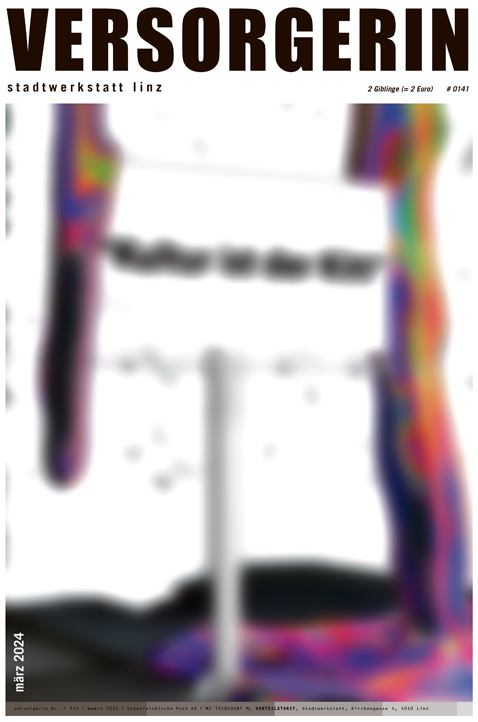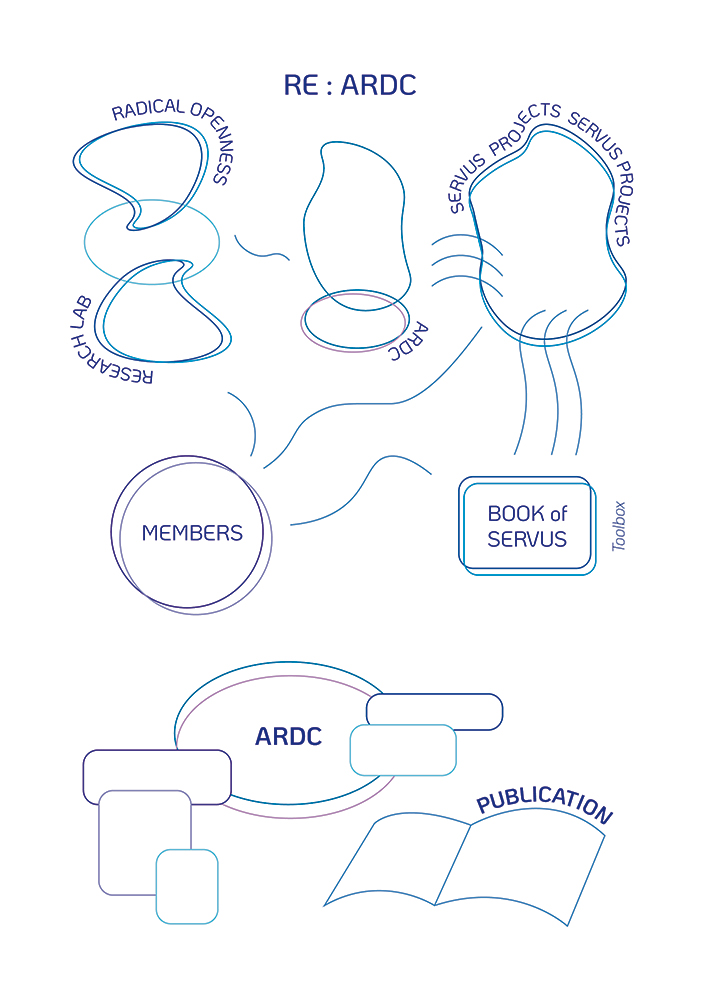Most non-profit associations will be familiar with the following situation: Out of passion the board and members invest hundreds of hours of voluntary work in projects, funding applications, events, meetings etc. While the necessary work is mostly covered and organizations are known regionally, people from regions further away will often not know about said organizations, their projects or events. Thus questions of visibility arise, often in the form of: »how can we reach out to more people and involve them in our work?«
This is particularly relevant for servus.at, an association that is not only interested in promoting its activities, but has a strong interest in offering the self-hosted toolkit to a vast amount of artists and cultural workers.
Of course, tools like social media, flyers, posters and word of mouth are the most relatable ways to advertise and increase visibility, however most organizations already take advantage of those possibilities. Still (or naturally), creating supra-regional knowledge of the association’s activities via those tools is nearly impossible, especially for those who were founded relatively recent. The question is furthermore, what the added value of visibility is in the first place – if you observe how the toxic dynamics of the attention economy and the influencer era seem to pollute and destroy every nice little thing that was miraculously hidden until then. Do we want to be visible at all? How do we address the very narrow line between the promotion of valuable cultural work and self-advertisement? What does make sense to be shown, and how?
Needless to say, servus.at is not an advertising agency nor a social media platform. However, we realized that we need to give more space to such aspects. To address those issues described above, we at servus.at have started the »Re:ARDC« project, which focuses on rethinking the role of the Artist Run Data Center - the ARDC - as a collaborative platform for artists and collectives from the servus/AMRO community.
The overall aim of this project is to create a new space for communicating the activities of the members of the art and culture initiative
servus.at, a website that makes visible interconnections between infrastructure, member activities, artistic research processes and critical discourse developed within the context of Art Meets Radical Openness. The »Re:ARDC« project aims to strengthen its community and disseminate its knowledge through the documentation of existing projects, such as the series of residencies in the ARDC.
And why is it called Re:ARDC? Simply because this project (ARDC) in its basic form is not a new one and ARDC is RE-thought, thus Re:ARDC. Another possibility of interpretation would be associating »Re:« with the prefix from E-mails, as if it was a reply to the first iteration of ARDC. In 2015, the first version started as ARDC and was also featured in articles in the Versorgerin (#108, #136).
A Data Center Run by Artists
In the servus.at team, the term ARTIST RUN DATA CENTER (ARDC) refers to the many virtual machines (VMs) that artist* groups host on one of our dedicated servers. A virtual machine (VM) is a computing resource that uses software instead of a physical computer to run programs and deploy applications. A VM can be imagined as a fully functional computer or server, just as every basic user knows it, without any dedicated physical components or a machine. It is indeed »virtualized«. In this way, several virtual »guest« machines can run on the same physical »host« machine. Each virtual machine runs its own operating system and functions separately from the other VMs, even though they all run on the same host machine.
Because of their flexibility and deployability, VMs are often used as a collaboration platforms for and between collectives. Additionally VMs can be used by every PC owner if the need arises to run a program, which is not available in the used Operating System (OS) and installing an instance of the needed OS is not wanted or possible.
In the servus.at datacenter, the ARDC refers to such spaces for experimentation and exchange that develop independently from us in terms of content.
There are currently around 20 VMs in the ARDC machine. Some of them are dormant or just backup projects, others are still running (like the Pervasive Labor Union) and some are experimental.
It is important to know that the VM is generally more than the website that is visualized when visiting an URL attached to one ARDC. There is a lot more (invisible) work happening inside the server. On those machines, there is often more or less custom or modified software involved that performs specific tasks.
An example for a Re:ARDC project is the one of Vo Ezn: the website f00f.fail is a meta-project which makes the computational processes visible that are happening in the server behind the page surface. It was implemented within the context of the AMRO Research Lab 2023. For the #139 of the Versorgerin (September 2023), Aimilia Liontou of the servus.at team had a conversation with Vo Ezn that resulted in the article »Creating introverted interfaces and taking care of servers« (Versorgerin #139).
Besides those projects, run by collectives and artists themselves, we also introduced the concept of »virtual residencies«. Similar to artist in residencies, where people get invited by cultural institutions or initiatives to work on an art project over a certain period of time, the selected artists or groups will have access to a Virtual Machine within the servus.at infrastructure and use it as a place to produce, develop or communicate their work. As with most projects that are somehow involved with us, approaches are preferred which delve into critical aspects about the role of infrastructure and use the server as a place of encounter.
Example for such residencies are »Next Cloud Residency« and »Next Cloud Atelierhaus«, two projects that took place in 2021 and 2022, using servus.at infrastructure, or to be more specific: the cloud, which most servus.at members will be familiar with.
As part of the residency program, every month a new artwork created by a different artist was presented publicly in the cloud throughout 2021.
In 2022, after a positive evaluation of »Next Cloud Residency«, we further developed the concept and brought the »Atelierhaus« to life, where we experimented with how our digital infrastructure can become an art institution and exhibition space. Both members, as well as external users, could see a link at the bottom when using the cloud in a Browser and visit the »Atelierhaus«.
From the website to the tools
Beside the new website and an appealing visual representation, we also want to represent our members in some of our other ongoing projects – such as in the book of servus. The book of servus primarily features documentation on the tools provided by servus.at (Cloud, Mail, calendar etc.) could also function as an additional component of Re:ARDC. Presenting well thought out and designed ways of using our tools as best practice examples could encourage other members to use more F/LOSS (Free/Libre Open Source Software) and provide practical examples for the possibilities of our tools.
We already use our infrastructure as a space where members can perform and exhibit artistic work, such as the 2021 and 2022 projects »Next Cloud Residency« or »Next Cloud Atelierhaus« when it comes to actively generating new content, or with the book of servus where we present already existing best practice examples. But those resources will only fulfill their purpose, when our members become active, participate and collaborate.
However, another essential tool for the Re:ARDC project that servus.at can provide and fill with content, will be newsletters. Servus.at operates two of them: one general servus.at newsletter and one specifically for people in and around AMRO (our community festival »Art Meets Radical Openness« organized since 2008 on a biennial base by servus.at in cooperation with the Kunstuni Linz, Department of Time Based Media – currently its 2024 edition is in development, see also the current issue of the Referentin. Now back to the newsletters!)
The general servus.at newsletter is sent out on a monthly base. Besides updates on recent developments in and around servus.at, an integral part will be the (visual) representation of our diverse community. Servus.at members receive the newsletter automatically, everyone else interested can sign up via the servus.at homepage https://core.servus.at/
The newsletter itself has been in use for a long time, however this year we started to emphasize our members and their communities as well as their respective projects. We are of course aware that newsletters will only reach certain people with an affinity for art and technology and some users will never bother to open those. Nevertheless we think that a well designed and informative newsletter could overcome these issues and get the reactivity we want and develop the representation our members need.
A result of this extensive project is the fact that developing Re:ARDC will be an ongoing work in progress, even when the initial setup is complete. Of course, servus.at is aware of challenges that come along with this project, especially since visibility and communication are probably the most challenging tasks in any collective or organization.
The prospect of a well-connected servus.at community and the associated creative flow elevates the whole project from a »nice-to-have« status to an indispensable cornerstone of our joint creative, technological and/or activist creation.
A version of the text with online links to the mentioned projects can be found at versorgerin.stwst.at.

